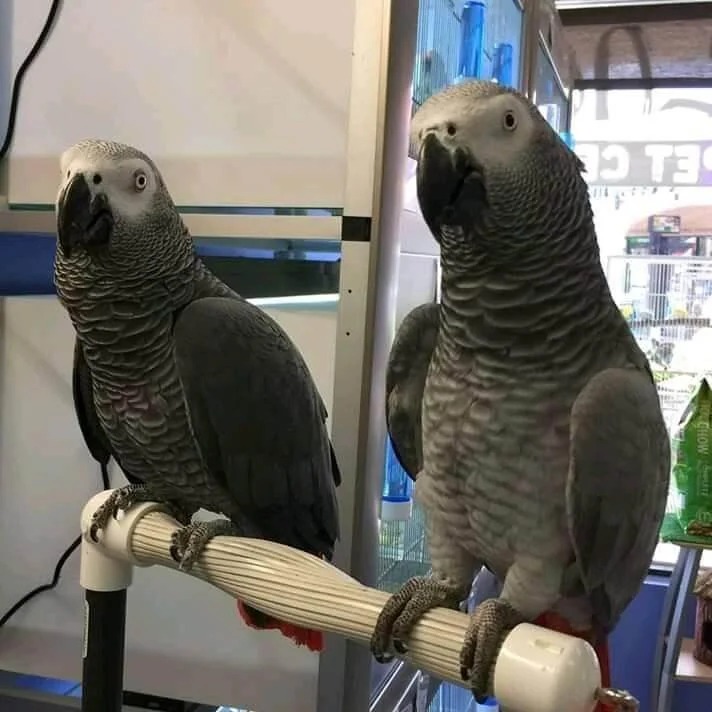Guide To Grey African Parrot: The Intermediate Guide For Grey African …
페이지 정보

본문
The Fascinating World of the African Grey Parrot: Everything You Need to Know
The African Grey Parrot (Psittacus erithacus) is not only known for its striking look but also for its exceptional intelligence and social nature. Highly searched for as a pet, this bird has actually captivated the hearts of bird lovers all over the world. This article will explore the attributes, care, and behavioral requirements of the African Grey Parrot, together with addressing frequently asked concerns about this extraordinary bird.
Physical Characteristics
The African Grey casco parrot for sale stands apart due to its unique coloration and features:

| Feature | Description |
|---|---|
| Size | Medium-sized, typically 12 to 14 inches |
| Weight | 300 to 400 grams |
| Color | Gray feathers, with intense red or maroon tail plumes |
| Life-span | 40 to 60 years in captivity |
| Beak | Strong, curved, dark gray beak |
Subspecies
The African Grey Parrot is typically divided into 2 subspecies:
Congo African Grey: Known for its bigger size and more striking coloration, primarily discovered in the main jungles of Africa.
Timneh female african grey parrot Grey: Slightly smaller sized with a darker plumes and a distinct maroon tail.
Comprehending these physical qualities is necessary for potential owners, as some aspects can affect care routines and environmental requirements.
Behavioral Characteristics
african grey parrot adoption Grey Parrots are renowned for their high intelligence levels. They can discover an extensive vocabulary and mimic various noises, consisting of human speech. Their cognitive skills make them a pleasure to have around but also a challenge, requiring devoted mental stimulation.
Key Behavioral Traits:
Social Interaction: African Greys take pleasure in interaction and can become emotionally connected to their owners. They grow in social environments and do not prosper in solitary conditions.
Problem Solving: They possess extraordinary problem-solving skills, often figuring out how to open locks or control objects.
Dullness and Destructive Behavior: Without adequate mental stimulation, African Grey Parrots can establish boredom-related habits. Toys and exercises ought to be integrated into their daily routine to avoid harmful tendencies.
Caring for an African Grey Parrot
Taking care of an African Grey Parrot involves understanding its requirements in terms of diet plan, workout, and social interaction. Here are some vital tips:
Diet
A well balanced diet plan is essential for keeping health. A normal diet may consist of:
- Pellets: Formulated pellets must comprise about 60-70% of their diet.
- Fresh Fruits and Vegetables: Aim for a variety of colors to guarantee a broad variety of nutrients.
- Nuts and Seeds: Use these as treats and not as the primary diet due to high-fat content.
- Water: Always provide fresh water and change it daily.
Housing
- Cage Size: The cage must be spacious sufficient to permit flight. Minimum dimensions of 2 feet large by 3 feet long by 3 feet high are suggested.
- Environment: Provide plenty of toys and perches, and rotate toys to keep the environment stimulating.
Social Interaction and Training
- Daily Interaction: Spend numerous hours each day communicating with your parrot. They require attention and love to take part in family activities.
- Training: Use positive reinforcement methods for training. Early socializing is essential to develop a well-adjusted bird.
Health Considerations
Like all pets, African Grey Parrots can experience health issues. Regular veterinary check-ups, a proper diet, and a safe environment add to long-lasting wellness. Here are some common health issues:
Common Health Problems
- Disorders: Feather plucking, obesity, and breathing infections.
- Signs to Watch: Changes in vocalizations, modifications in cravings, lethargy, or uncommon behavior may indicate a health concern.
Regularly Asked Questions (FAQs)
1. Are African Grey Parrots great pets?
Yes, they can be outstanding pets for those who can supply them with the time, attention, and stimulation they need. Their sociable nature makes them loving companions.
2. For how long do African Grey Parrots live?
With appropriate care, African Grey Parrots can live in between 40 and 60 years in captivity.
3. Can African Grey Parrots talk?
Yes, they are impressive mimics and can find out a vast vocabulary along with sounds from their environment.
4. Do they need a buddy?
While they can bond deeply with their owners, African Grey Parrots often gain from having another bird as a buddy to meet their social needs.
5. How often should they be gotten of their cage?
They must ideally be allowed out of their cage for a number of hours each day for exercise and social interaction.
The african grey parrot birds for sale Grey African Parrot (Psicolinguistica.Letras.Ufmg.Br) Parrot is not simply an animal but a companion that grows on human interaction and psychological challenges. Their intelligence and social nature make them satisfying, yet requiring to look after. For anybody thinking about welcoming an african grey parrots sale Grey into their home, it's essential to acknowledge the commitment required and the happiness these birds can bring. By comprehending their requirements and qualities, prospective owners can make sure a fulfilling experience for both themselves and their feathered buddies.

- 이전글You Are Responsible For The Macaw Pet For Sale Budget? 12 Tips On How To Spend Your Money 25.04.29
- 다음글انجام سئو سایت - متخصص سئو - خدمات بهترین سئو 25.04.29
댓글목록
등록된 댓글이 없습니다.
